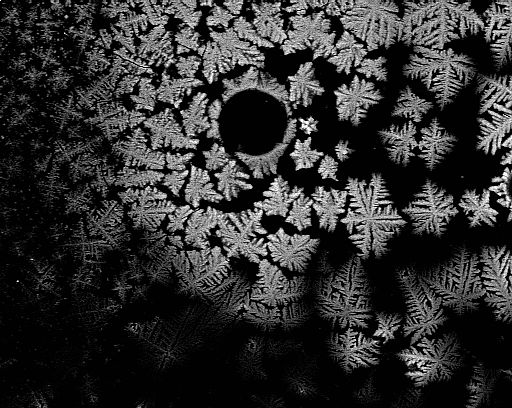Problem Set 4.
1. Form a low-pass spatial filter that averages the 4-neighbors of a
point but excludes the point itself. Assuming an NxN image: (a) Find the equivalent filter H(u,v)
in the frequency domain. (b) Show that this is a low-pass filter.
g(x,y)=(1/4)[f(x,y+1) + f(x+1,y) + f(f(x-1,y) + f(x,y-1)]

Because of the cosine terms, this filter has a gain of +1 at the center or
zero frequency, a gain of zero at u = v = N/4, and a gain of -1 at u = v = N/2.
Of course, N/2 is the maximum valid frequency for an N x N image. Since the gain
decreases with increasing frequency, the filter is a low pass filter.
2. Using the image shown below (icextl.tif), use sharpening to enhance
the pictures. What can you do about the uneven illumination? Can you
improve the picture?

The illumination can be made more uniform either by applying a large mean
filter to a copy of the picture until the detail is all gone and the resulting
image used as a background, a fraction of which (0.8 ?) can be subtracted from
the original. If too much background is subtracted, the picture will be very
dark. After subtracting background, try contrast stretching and/or histogram
equalization. Finally, see if applying a high-frequency boost will bring up the
crystal edges a bit.
